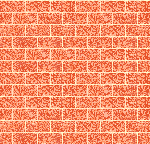 |
|
 |
Mills of Sutton Coldfield |
|
Many mills have been recorded as existing in the Sutton Coldfield area, the earliest being a corn (wheat) mill belonging to the lord of the manor in 1126. Most of these early mills were water powered, Maney and Langley being the only two windmills in the area. The remains of a horse mill have also been discovered in the northern part of Sutton Coldfield. Several of these water mills were built in Sutton Park, using the many small streams for power. To maintain a water supply to these mills, mill ponds were created and these still survive as the pools of Sutton Park. Besides corn milling, many other industries also relied on the local water power, including spade forging, steel rolling, boring gun barrels, leather dressing, cloth fulling, button polishing and wood sawing. Some mills changed their trade during their lifetime, two mills each having three trades before becoming derelict. Even the area that is occupied by the Sutton Coldfield Gracechurch Centre was once a mill pond. This provided water for Town Mill, a corn (wheat) mill, with the Parade, previously called The Dam, later built on the line of the mill pond dam. New Hall Mill, originally milling wheat to provide flour for the local area, underwent various rebuilding changes throughout the years. Later, when larger roller mills could provide better quality flour at a lower price, the miller abandoned flour production and concentrated on part-time production of grist or animal feed. Using a very noisy hammer mill powered by the diesel engine, he considered the waterwheel as being an unreliable power source. New Hall Mill, downstream of Sutton Park and Sutton
Coldfield, originally abstracted water from the Ebrook, often referred
to as Plant's Brook, via a 'leat' or man-made channel that fed into the
mill pond. Based on extensive research In 1969 - 1971 parts of the Ebrook were diverted to a new watercourse to prevent flooding problems in Sutton Coldfield. Unfortunately it also stopped the flow from the Ebrook into the mill pond. The water supply to the mill is now limited to some springs around New Hall and land runoff and drainage. A recirculation system enables the mill to operate on Open Days, water being collected in a concrete tank located in the original tailrace and then pumped back to the mill pond. Sutton Park, with many of the original mill ponds and
archaeological remains from the Roman times and earlier, is |
|